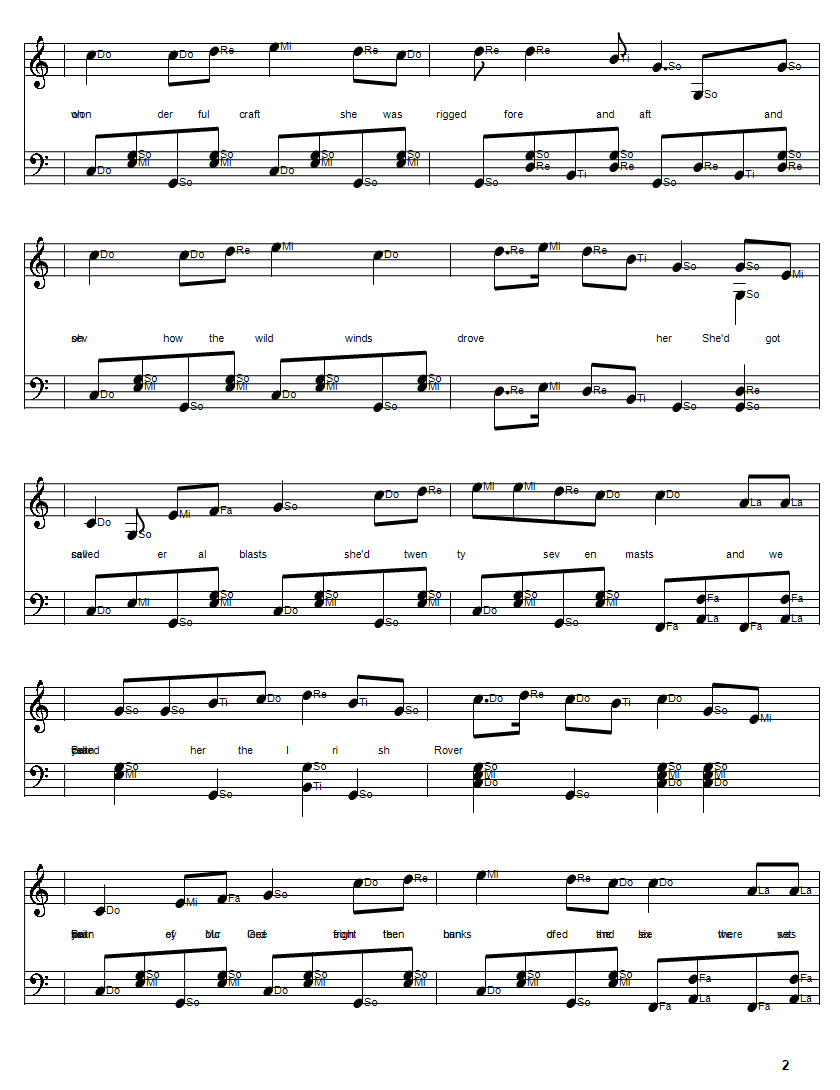The Irish Rover sheet music and tin whistle note
The Irish Rover Tin / Penny Whistle Sheet Music Notes with a time signature of 4/4 .. The easy do re mi solfege notes for The Irish Rover are included for those who use that system of playing. Recorded first by The Clancy Brothers and Tommy Makem and later by The Pogues And The Dubliners. I have included the basic piano / keyboard melody letter notation for recorder or flute players, the most popular is the one in the key of D, but I also worked it out in the key of G which is the second one. This song is available in my tin whistle book which includes all the easy letter notes to over a hundred songs. Beginners of any instrument sometimes think they can jump right in and start playing any song once they know where all the notes are on their instrument, that's not really the case as you have to work your way up to the more difficult songs step by step, The Irish rover tune is a little bit more difficult to play than beginner songs such as Dirty Old Town or The Drunkin' Sailor. So keep that in mind. The song lyrics of The Irish Rover are here with guitar chords.The Irish Rover beginner piano letter notes now added. A PDF file of the piano score included.
Below is the list of Pogues tin whistle sheet music in their ebook.
It costs €7.40
It costs €7.40
| the-irish-rover-tin-whistle-notes-pdf.pdf |
Irish Rover Key Of D 8 Beats, same as video.
These are the easy to play letter notes. All the f notes are sharp. The CAPITAL letters are the low notes below B and all the lower case one's are the higher notes.
These are the easy to play letter notes. All the f notes are sharp. The CAPITAL letters are the low notes below B and all the lower case one's are the higher notes.
Below is the list of sheet music and tin whistle songs that are in my ebooks. This is the largest collection of tin whistle songs ever put together.[over 800 songs ] Including folk, pop and trad tunes plus German And French songs along with Christmas Carols.
All of the sheet music tabs have been made as easy to play as was possible.
The price of the ebooks is €7.50
All of the sheet music tabs have been made as easy to play as was possible.
The price of the ebooks is €7.50
Scroll down to see the full list of songs in the PDF
PDF File of the piano score
| irish-rover-piano-sheet-music.pdf |
The do re mi solfege piano sheet music notes for The Irish Rover
The full sheet music score for The Irish Rover in the key of a high D














